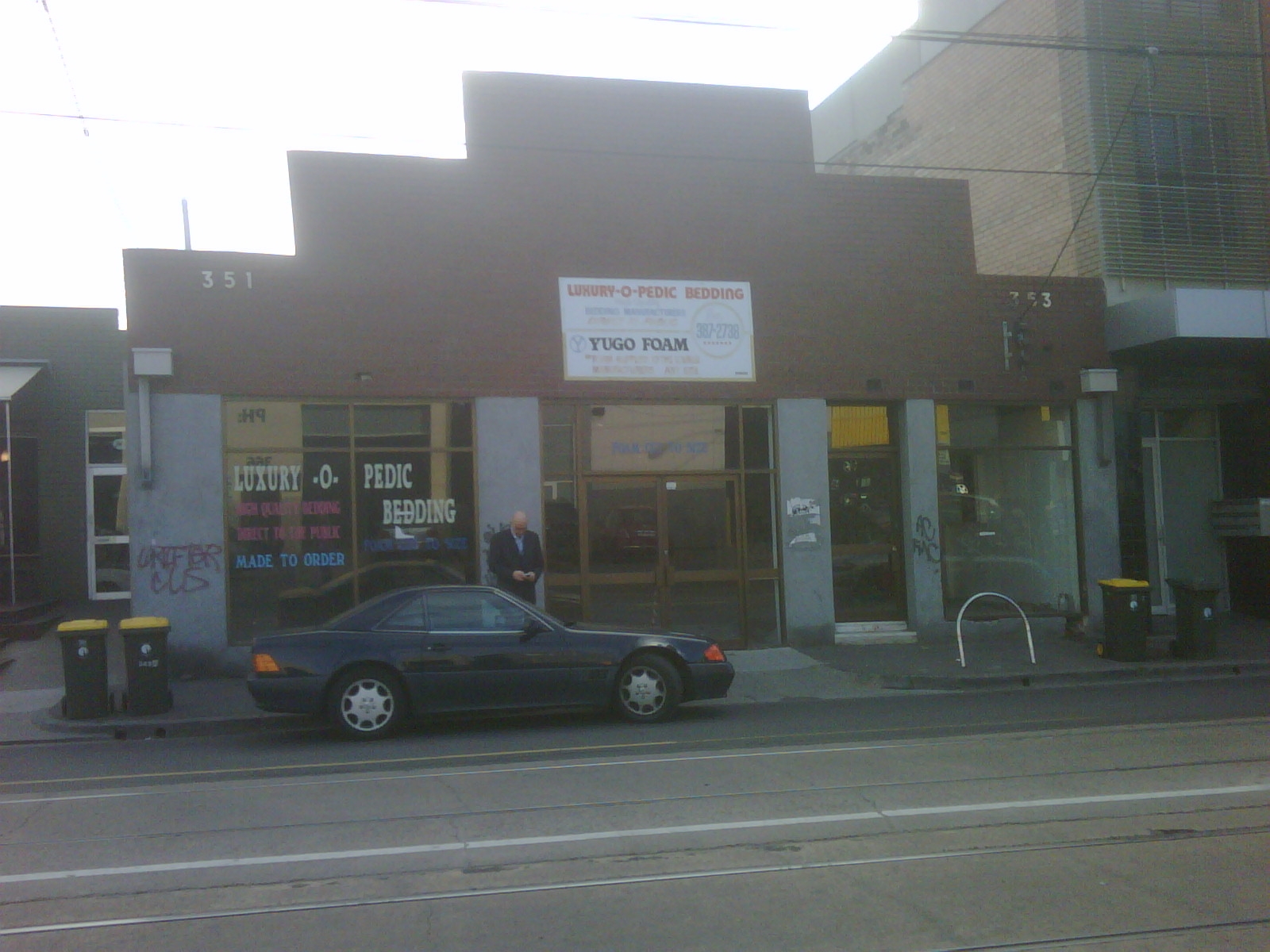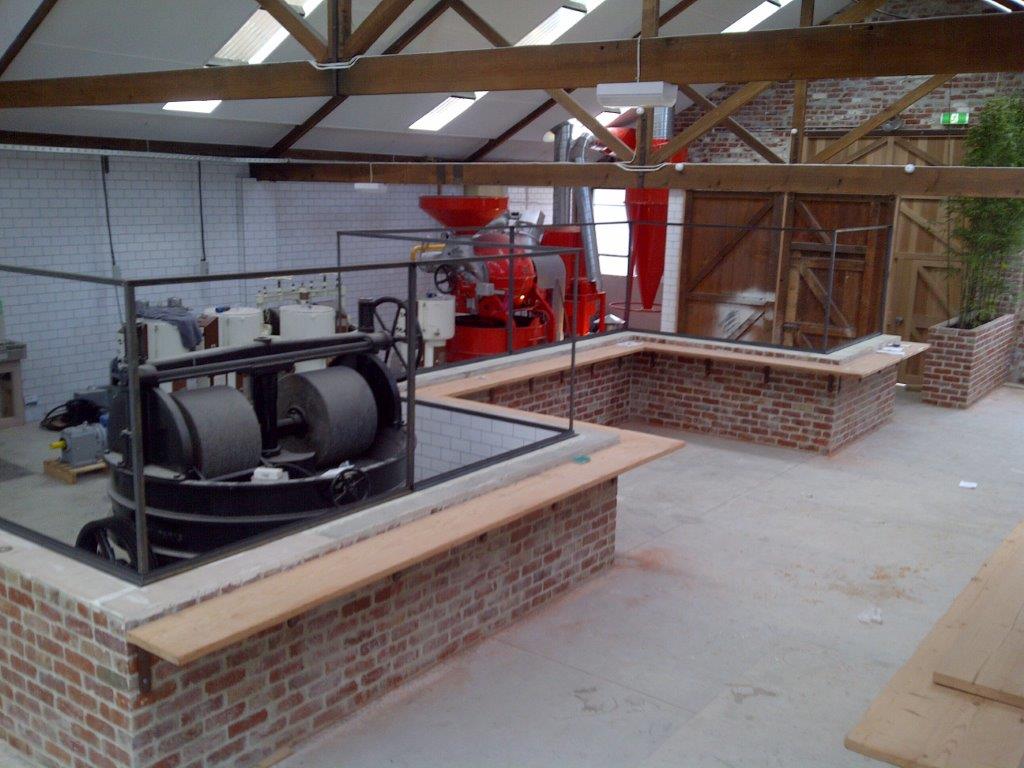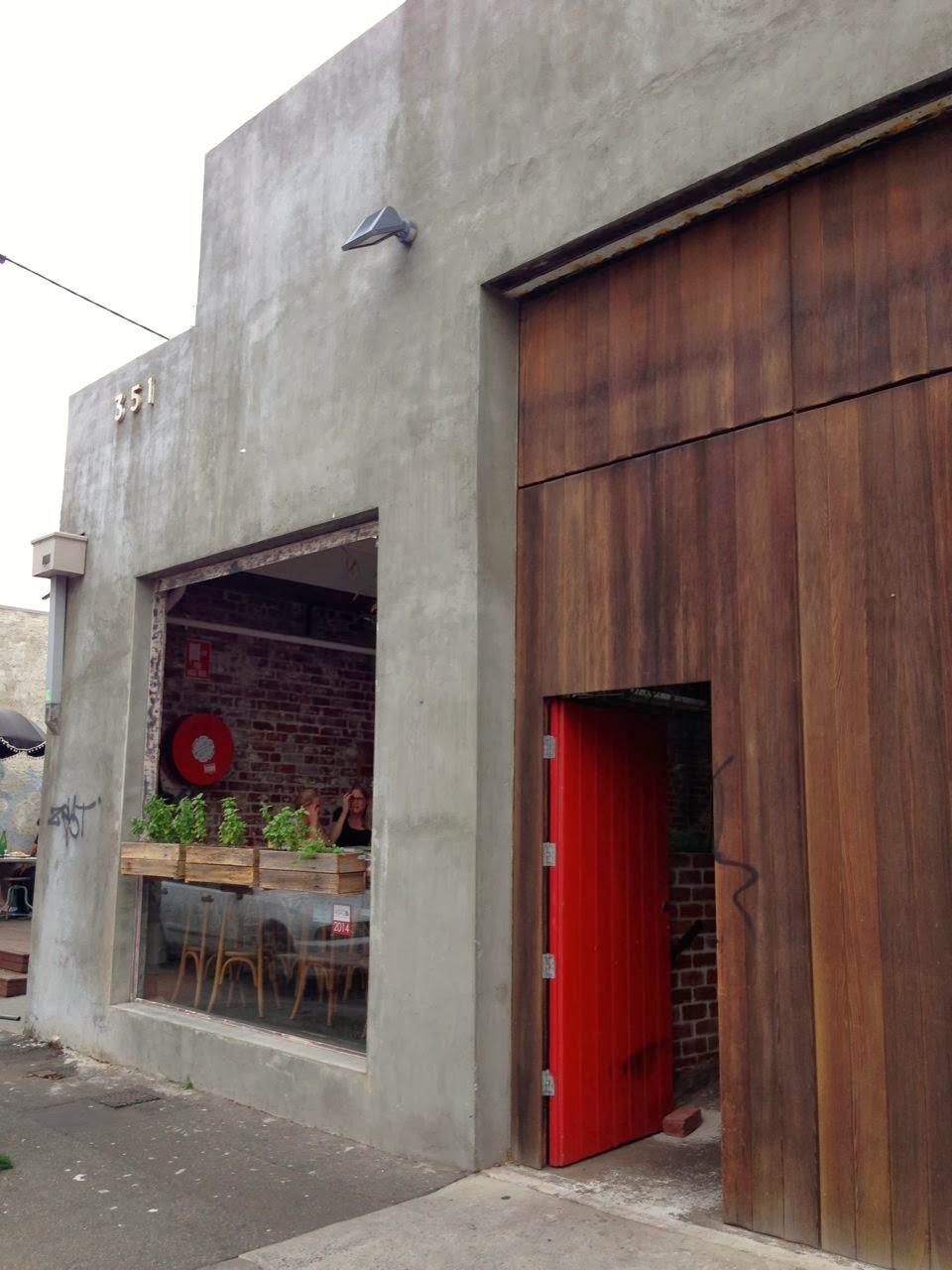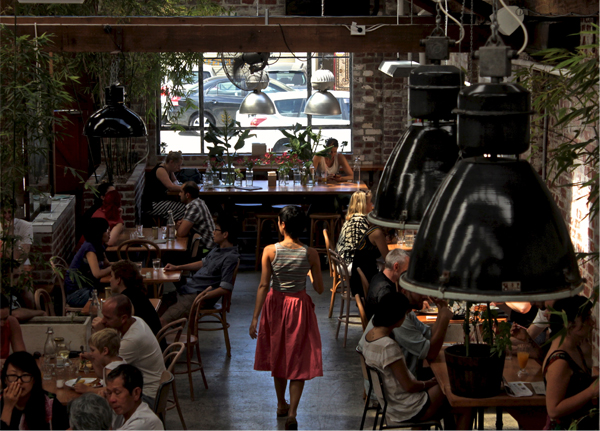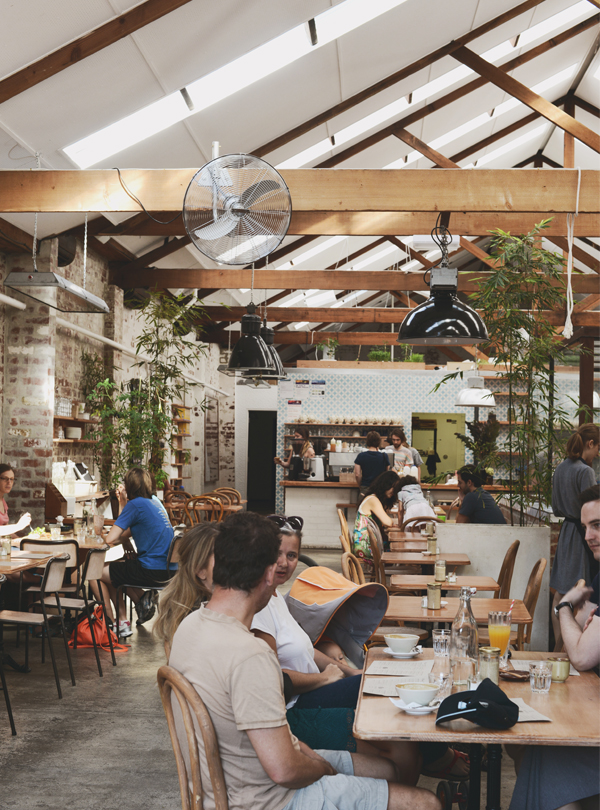
East Elevation: the un-designed café
East Elevation: the un-designed café
Share
Above image by Lauren Bamford.
Melbourne’s East Brunswick is replete with dormant industrial spaces practically begging to be converted into uber cool hipster cafés, and East Elevation, on the grungy northern side of Lygon street, is a unique addition to the local trend.
From vintage machinery sitting alongside bespoke tables, patterned tiles and industrial feature lighting, the various elements of the interior design resolve in a fresh and satisfactorily understated way, giving East Elevation its own identity apart from other similar establishments in the area – so it may come as a surprise to discover that the fit out was driven largely by a chef and a business owner, with not a designer in sight.
“In this day of design being such an exclusive profession, people often don’t realise that some can just do it themselves,” says the enterprising Brian Edwards, former head chef and now partner at East Elevation.
Edwards was brought in to helm the restaurant’s kitchen, back when it was still known as ‘L’atelier de Monsieur Truffe,’ a name referring to the artisan chocolatier that began the tenancy, whose products are featured on site. The name soon proved a veritable tongue twister for the average Aussie customer, and Edwards came up with ‘East Elevation’ after noting the architectural plans labelling the building’s distinct street frontage.
Apart from christening the new venture, Edwards also created East Elevation’s popular seasonal menu and now oversees the restaurant’s development and evolution, from a novelty chocolaterie offering a small menu to a bonafide café with presence, in both a culinary and design sense.
By the time Edwards was brought into the project, partner Ugo Cocchis had set up the initial structure. Originally housing a mattress factory, the space lent itself well to accommodating the bulky chocolate processing equipment now on display behind glass partitions. When Cocchis first acquired the building, it was “basically just four walls and a tin roof – and quite run down in the front”.
A facelift in grey render coupled with an intriguing red door served as an early indication that something different was coming to the area – but without any signage, or indeed, any windows in its enigmatic frontage after they were bricked in to update the site, the restaurant had to rely on burgeoning local word of mouth to draw customers in.
Edwards was instrumental in inserting the large front window, opening the restaurant up to the street. “It’s alive now, and has a lot more street presence – we’ve had many locals say that they’ve walked past the red door before and been too scared to come in,” says Edwards. “For a business of our size, we need to have publicity on a street level”.
As far as the eclectic fit out goes, it is informed largely by the chef’s experiences, and the untapped potential of the space itself. “I’m inspired a little bit by places I’ve worked at around the world, but the main thing is that I’ve been given an opportunity with East Elevation to do basically all the things I’ve dreamed of doing in a blank canvas,” says Edwards.
The café’s rustic old-world industrial meets vaguely Scandinavian scheme provides a familiar and inviting setting for a casual brunch. Maintaining a local flavour beyond the menu, tables and benches made of Oregon timber were crafted for the restaurant by a carpenter based in Thomastown.
The overall design takes advantage of the lofty volume of the former factory, with skylights flooding the space with natural light. It’s a relaxed aesthetic, softened by copious amount of living greenery, sprouting seemingly from every corner of the space. Tall bamboo stalks tower over the entrance as part of Cocchis’ original design, and edible plants and flowers are distributed throughout.
A big motivation for Edwards was to be able to grow as many ingredients as possible on site. “We’ve got herbs we can use in the kitchen, for salads and garnishes,” Edwards says. The kitchen has also previously grown mushrooms, and has even housed honeybees in its rooftop garden.
“The idea was that the place should not look like a new factory, but could have possibly been here for a very long time,” says Cocchis. Wired glass partitions edged in rusted metal add to this vintage feel, providing a barrier between the restaurant and heavy machinery used to process cacao beans.
After meeting Monsieur Truffe himself, Thibault Fregoni, and building a rapport, Ugo decided that “we wanted to give back to the community by investing in a person that had a passion in an artisan field – his dream was to make chocolate from the bean.” The equipment was largely made Germany in the 1950s, sourced overseas and brought to Australia to make Monsieur Truffe’s small batch “bean to bar” production possible.
Looking ahead, there are big plans for East Elevation. In keeping with their civic attitude, Edwards says, “we want it to be a communal space, to do galleries and show exhibitions and things that will benefit the community more than anything else.”
To date, the restaurant has hosted a wedding, a dance theatre evening, and the team has even “wheeled a piano in and done a ‘dinner and a show’ thing,” with garden and chocolate workshops potentially on the cards in months to come. The versatility of the space invites activity and interaction; it is a popular fixture with young families and locals who come to East Elevation for the food (and chocolate), and stay for its laid-back vibe and open, community-minded approach.

